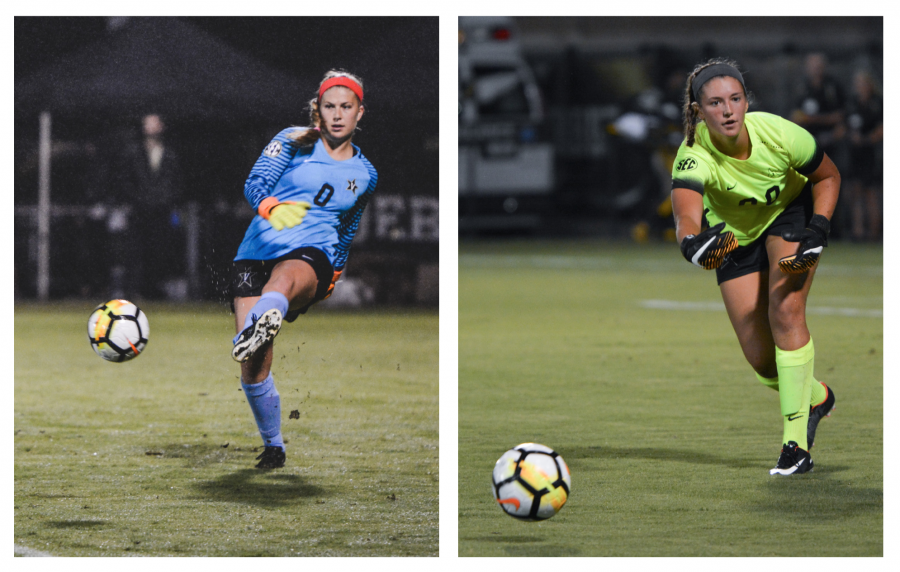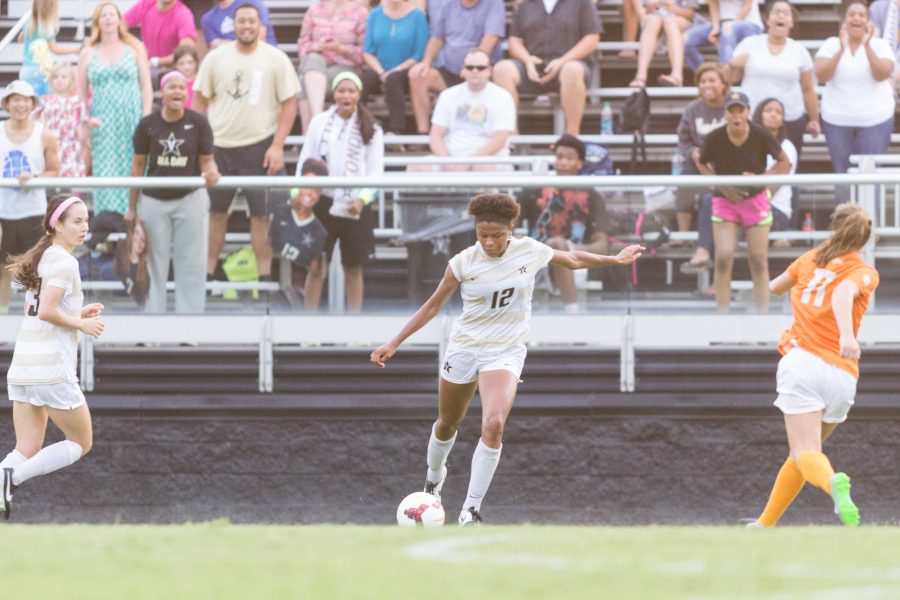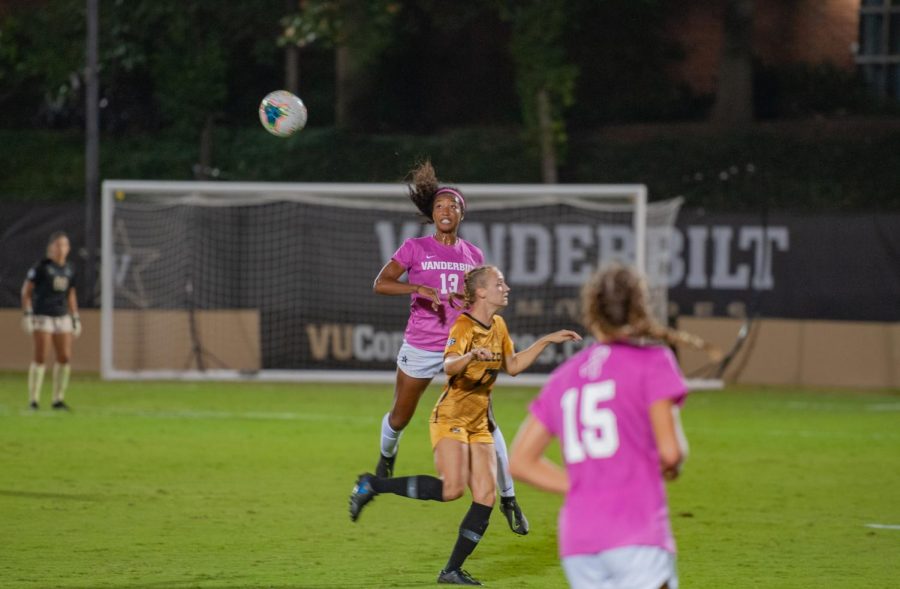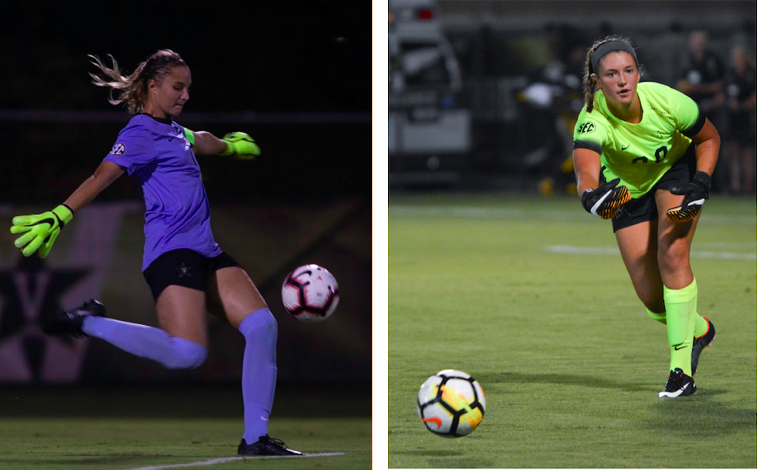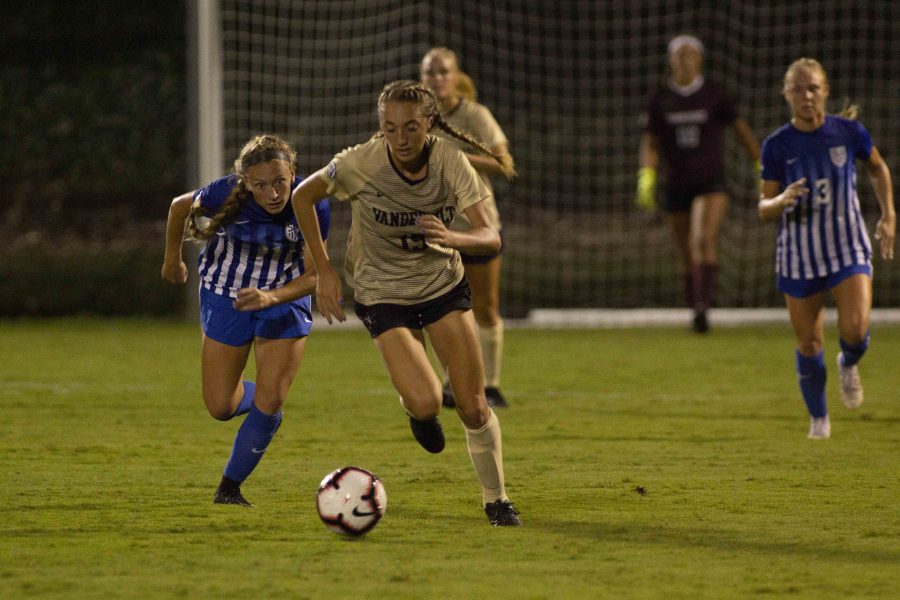During the lengthy and grueling practices of Vanderbilt’s women’s soccer team, four players execute drills and perform exercises a little distance away from the rest of the team.
These four players are the goalkeepers: fifth-year senior Kaitlyn Fahrner, sophomores Lauren Demarchi and Taiana Tolleson, and freshman Sarah Fuller, who has unfortunately been injured for most of the season. Normally, college teams aim for a total of three goalkeepers on the roster, but Vanderbilt’s four allows the team more flexibility and creates an unusual dynamic.
Fahrner, who transferred to Vanderbilt from Oklahoma in 2016, has an impressive track record from her four and a half seasons of college soccer. She finished the 2016 season fourth in SEC goalkeepers with a save percentage of .804 and led the SEC in saves per game with an average of 5.29. During her time at Oklahoma, she recorded a stellar goals-against average of 0.99 in 2014 and allowed just one goal in her two matches she started in goal in 2015.
Tolleson, who is Vanderbilt’s first Hawaiian soccer student-athlete, logged 28 minutes as goalkeeper during the 2016 season, including two appearances in black and gold competitions. Demarchi logged 491 minutes as goalkeeper in 2016, made 18 saves, and earned a win over Mississippi State by allowing only one goal on ten shots.
During the aforementioned practices, the goalkeepers warm up and stretch with the rest of the team, then do keeper training while their teammates do other exercises and drills. At the end of each practice, the goalkeepers will rejoin the remainder of the team for 11 v. 11 games and goal practice. According to Fahrner, the keepers sometimes “feel disconnected from the team,” but she agreed with Demarchi that their separate practices “make us all closer because we spend a lot of time together.”
Often, one goalkeeper will play several games in a row before being switched out by one of the remaining keepers. There is no set rotation or schedule, only head coach Darren Ambrose’s judgment.
“Who he [Ambrose] feels is most fit to play plays,” Demarchi said, “and they play until he feels they are not fit to play.”
While the coach will usually decide the goalkeeper based on performance, Ambrose’s hand was forced earlier this year when Fahrner missed a few weeks due to injury. In that span, Tolleson started six games, posting a .677 save percentage and 1.61 goals allowed average, guiding Vanderbilt to a 3-2-1 record in the process.
By having a four-person goalkeeper roster, Vanderbilt is at an advantage over many other colleges. For instance, University of Kentucky has only one goalkeeper this year, and their team is currently 7-11 and on a three-game losing streak. Fahrner points out that, since their sole keeper is injured, Kentucky has “lost badly to mediocre teams because a fielder played as goalkeeper.”
With Fahrner back in the lineup, Vanderbilt looks to wrap up the season on a high note headed into the SEC Tournament. Both Fahrner and Demarchi singled out the team’s recent 2-1 upset victory over No. 11 Tennessee as a high point for the season.
“[That game] was good to get our confidence back against losing a couple of games and to win against a top 25 team,” Fahrner said. “It’s all a collective unit. It’s not just me winning the game.”
Demarchi agreed, noting that “we can play perfectly and still tie 0-0,” so a victory over such a good team is even more meaningful.
The goalkeepers also agree that the team’s lowest points have been their back-to-back losses to Indiana and Rhode Island, both of which matches Vanderbilt was favored to win.
“We need to work on being a mature team to succeed,” said Demarchi.
“Because we have a young team, the hardest games to win are the games you’re supposed to win,” added Fahrner. “Going to get up to play for the games that are tougher is easier. The hardest games to get up and go to are the games you’re supposed to win.”
As of 10/22/17, the team is 10-6-1 in general and 5-3-1 in SEC games.

